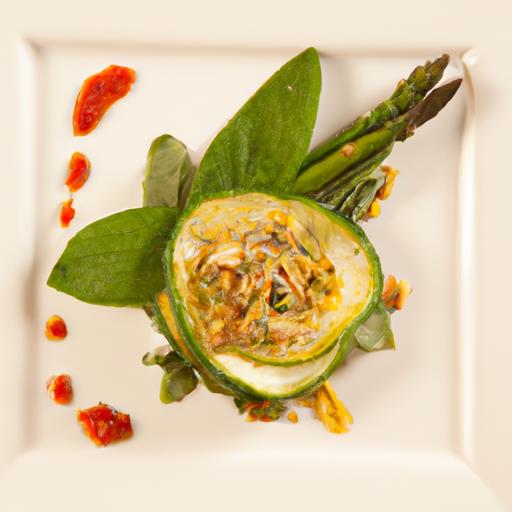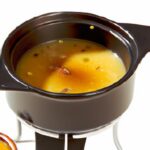Garlic-mighty bulb of the kitchen-has long been celebrated for its bold punch and unmistakable aroma. But beyond its raw, pungent bite lies a culinary transformation that few truly appreciate: the alchemy of roasting. As heat gently coaxed out its sugars and softened its fibers, garlic evolves from sharp and fiery to sweet, mellow, and irresistibly creamy. In this flavor test, we embark on a sensory journey, exploring garlic’s metamorphosis from its raw, assertive state to the rich, roasted bliss that enhances dishes around the world. Join us as we uncover the nuances, textures, and tantalizing tastes that make roasted garlic a beloved kitchen treasure.
Flavor Test: Garlic’s Journey from Raw to Roasted Bliss
Flavor Test: Garlic’s Journey from Raw to Roasted Bliss reveals the fascinating transformation of garlic’s pungent, sharp character into a mellow, sweet, and savory delight. This culinary journey captures how heat not only softens garlic’s texture but also unlocks layers of complex flavor that elevate any dish. Whether you’re new to roasting or a seasoned cook, understanding this process will inspire you to master garlic roasting and add irresistible depth to your everyday meals.
Prep and Cook Time
- Preparation: 5 minutes
- Cooking: 40 minutes
- Total Time: 45 minutes
Yield
- Yield: Roasted garlic from 1 whole bulb (about 8-10 servings)
Difficulty Level
- Difficulty: Easy
Ingredients
- 1 whole bulb of garlic, top trimmed to expose cloves
- 2 tablespoons extra virgin olive oil
- Salt (a pinch)
- Optional: Fresh herbs (thyme or rosemary sprigs) for aroma
Instructions: Mastering Roasted Garlic
- Preheat your oven to 400°F (200°C). Line a small baking dish with foil for easy cleanup.
- Prepare the garlic bulb: Remove loose outer layers of the garlic bulb skin, leaving the bulb intact. Using a sharp knife, trim about 1/4 inch from the top of the bulb to expose the tops of individual cloves.
- Place the garlic bulb in the foil-lined dish, cut side up. Drizzle evenly with 2 tablespoons of olive oil, ensuring the exposed cloves are coated. Sprinkle lightly with salt and tuck in optional fresh herbs if desired.
- Wrap the garlic bulb loosely with foil to trap steam, then bake for 35-40 minutes. Check doneness by gently squeezing a clove through the skin; it should be soft, golden, and spreadable.
- Allow the garlic to cool slightly before handling. Squeeze or scoop cloves out with a small spoon-now sweet, buttery, and mellow, perfect for spreading or adding to dishes.
Tips for Success When Roasting Garlic
- Choose firm, plump garlic bulbs for the best flavor and texture after roasting.
- Don’t over-bake; the ideal roasted garlic should be tender but not mushy or burnt.
- For a quicker roast, halve the bulb crosswise but watch closely to avoid drying out.
- Store leftover roasted garlic in an airtight container in the fridge, submerged in olive oil, for up to 1 week.
- Use roasted garlic as a natural flavor enhancer in sauces, mashed potatoes, dressings, or simply spread on toasted bread.
Serving Suggestions to Elevate Your Dishes
Roasted garlic’s caramelized sweetness pairs marvelously with a variety of dishes. Spread it on warm crusty bread with a drizzle of olive oil and fresh herbs for a quick appetizer. Mash it into creamy mashed potatoes for a comforting side, or blend into soups for an added depth of flavor. Garnish pasta and grain bowls with a dollop of roasted garlic purée and sprinkle bright, chopped parsley or chives on top for contrast and freshness.

The Science Behind the Garlic Transformation
Roasting catalyzes the Maillard reaction and caramelization within garlic cloves. As heat breaks down harsh sulfur compounds, the flavor profile shifts from sharp and pungent to sweet and nutty. This chemical change also softens the fiber inside the cloves, making roasted garlic not only rich in flavor but velvety in texture.
| Nutrient | Amount (per bulb) |
|---|---|
| Calories | 150 kcal |
| Protein | 6 g |
| Carbohydrates | 33 g |
| Fat | 15 g (mainly from olive oil) |
Discover more about the chemistry of garlic in cooking for deeper insights.
Looking to pair your roasted garlic with other bold flavors? Check out our roasted vegetable recipes for scrumptious ideas to build a meal bursting with complementary tastes and textures.
Q&A
Q&A: Flavor Test – Garlic’s Journey from Raw to Roasted Bliss
Q1: Why does raw garlic taste so sharp and intense?
A: Raw garlic packs a pungent punch because of a sulfur compound called allicin. When you crush or chop garlic, enzymes transform alliin into allicin, delivering that fiery, zesty bite that wakes up your taste buds instantly.
Q2: How does roasting transform garlic’s flavor?
A: Roasting garlic gently mellows its aggressive sharpness and brings out a rich, caramel-like sweetness. The heat breaks down sulfur compounds, turning them into sugars and creating a lush, buttery texture and deep, nutty aroma. It’s garlic’s glow-up moment.
Q3: Is there a difference in texture between raw and roasted garlic?
A: Absolutely. Raw garlic is crisp and crunchy with a spicy zing, while roasted garlic becomes soft, spreadable, and almost creamy. This textural shift allows it to be used in totally different ways-from a bold addition in salads to a luscious spread on bread.
Q4: Can garlic’s flavor change depending on how it’s roasted?
A: Yes! Low and slow roasting produces a gentle, sweet garlic that’s almost jammy, whereas higher temperatures can yield a smoky, deeper flavor. Time and temperature let you tune garlic’s character from subtle background notes to star performer status.
Q5: How can experimenting with garlic’s flavor enhance everyday cooking?
A: Understanding garlic’s flavor journey empowers you to match it to your dish’s mood. Want a zesty crunch? Raw garlic is your ally. Craving warmth and comfort? Roasted garlic adds luxurious depth. This versatility helps elevate simple recipes into memorable meals.
Q6: Any tips for roasting garlic to perfection?
A: Slice the top off a whole bulb, drizzle it with olive oil, wrap in foil, and roast at 350°F (175°C) for about 40 minutes-until cloves are golden and tender. Let it cool before squeezing the silky cloves out. Experiment with seasonings like thyme or rosemary for added flair.
Q7: What’s your favorite way to enjoy roasted garlic?
A: Spread it straight onto warm, crusty bread for an irresistible snack or blend it into mashed potatoes for creamy, savory magic. Roasted garlic also works wonders stirred into soups, sauces, or even a simple pasta dish to impart depth beyond ordinary seasoning.
Insights and Conclusions
As we close the chapter on garlic’s transformative journey from its sharp, fiery raw state to the mellow, caramelized depths of roasted bliss, one truth becomes clear: garlic is more than just a kitchen staple-it’s a flavor chameleon. The alchemy of heat softens its bite and unlocks hidden layers of sweetness and complexity, inviting cooks and food lovers alike to experiment boldly. So next time you reach for those pungent cloves, consider the magic roasting can weave, turning simple garlic into an unforgettable culinary experience. Whether raw or roasted, garlic continues to be a timeless protagonist in the story of flavor.


